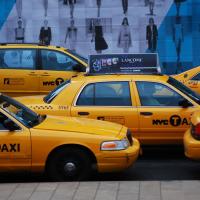
The taxi problem
May 1997
A witness sees a crime involving a taxi in Carborough. The witness says that the taxi is blue. It is known from previous research that witnesses are correct 80% of the time when making such statements. The police also know that 85% of the taxis in Carborough are blue, the other 15% being green. What is the probability that a blue taxi was involved in the crime?
Solution
Thanks to Steve Kallenborn from Switzerland for correcting the originally published version of this problem.
Anonymous
The probability is .68 or (17/25)17 out of 25
Anonymous
So, what is the correct answer please?
Emily Flynn
It would be easy to say that the probability of there being a blue taxi correctly identified as being blue involved in the crime is 0.85*0.8 = 0.68, and stop there. However, the (seemingly obvious) key insight here is that the fact that the witness identifies the taxi as being blue increases the chance of a blue taxi being involved, given that witnesses are correct 80% of the time, so the answer must be greater than 0.85.
A simple way to reach the answer is to consider the number of taxis per hundred that are identified as being blue. This number can be split into two separate numbers - blue taxis that are identified as being blue, and green taxis that are identified as being blue.
Looking at the second number, we will have to assume that if a green taxi is misidentified, the witness always says that it is blue, and not some other colour entirely. The average number of green taxis per hundred is 15, and we know that the witness will correctly identify them as such 80% of the time - in practical terms, of these 15, 12 will be identified as being green, while the remaining 20% (3 taxis) will be misidentified as being blue.
Looking now at the average number of blue taxis per hundred that are correctly identified as being blue - the first number - we go back to the initial probability calculated, 0.68, i.e. 68 per hundred. This is 80% of the average 85 blue taxis per hundred.
Bringing it all together, 68+3=71 taxis (on average) per hundred will be identified by the witness as being blue, of which 68 taxis are, in fact, blue. This means that the probability of a blue taxi being involved is 68/71=0.9577, or around a 96% chance.
Konrad Kmiecik
The question seems to be missinterpreted. I think it's extremly simple, he has 80% chances to be right and he's saying that the taxi is blue. So the propability of a blue taxi is 80%. I know it may sound stupid but this is the correct sollution to the problem.
Doron
it was either a blue or a green car.
It is green if the witness made a mistake.
The probabilty for that is .15*.2 (probabilty of the car being green times the probability that the suspect was wrong).
Therefore the chance for a blue car is 1-.15*.2=.97
Tom
This reasoning is wrong. Try calculating the probability of the witness being right the same way and you will see...the previous solution is correct:)